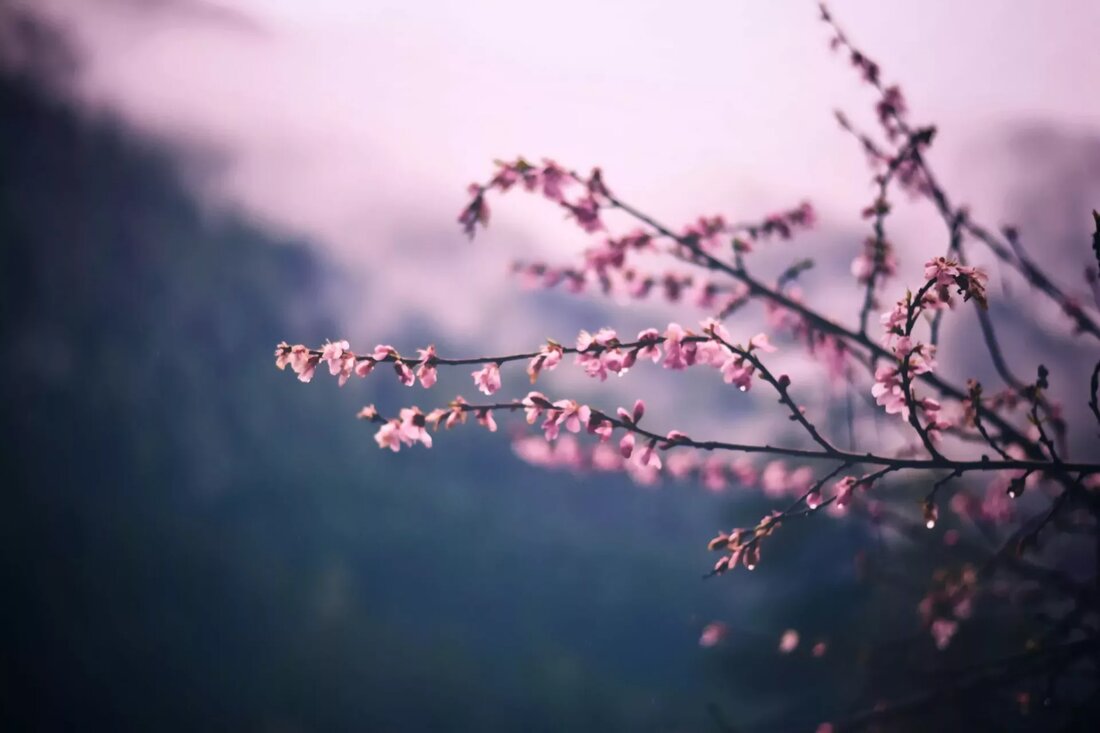Seasonal Mindfulness: Spring is the season of rebirth
After a long, dark winter, the arrival of spring signals a time of reawakening. We see it all around us in nature with changes in light, buds appearing on trees, and shoots emerging from the ground. One of my favorite signs is when the flowers are about to bloom. Here in the Western Hemisphere, where I'm writing this from, we typically notice the days getting longer in January, with a noticeable shift in February. With this in mind, it is interesting to note that while March is usually associated with the beginning of spring, spring in...

Seasonal Mindfulness: Spring is the season of rebirth
After a long, dark winter, the arrival of spring signals a time of reawakening. We see it all around us in nature with changes in light, buds appearing on trees, and shoots emerging from the ground. One of my favorite signs is when the flowers are about to bloom. Here in the Western Hemisphere, where I'm writing this from, we typically notice the days getting longer in January, with a noticeable shift in February. With this in mind, it is interesting to note that while March is typically associated with the beginning of spring, in the Chinese lunar calendar, spring occurs on or around the 4ththFebruary every year (known as Lichun – “beginning of spring”).
In Traditional Chinese Medicine, the organs associated with spring are the liver (yin organ) and gallbladder (yang organ) and the element wood. Just as spring is about rebirth and renewal, so too is the element of wood, which is also connected to our vision and imagination.
Both the liver and gallbladder are located in the upper right side of the abdomen and play important roles in the digestive system. On a physical level, the liver is the body's primary detoxification organ with only a few tasks including purifying toxins from the blood, metabolizing proteins, carbohydrates, and fats, producing bile, and regulating the amount of blood in the body. The gallbladder, located directly beneath the liver, stores bile, which helps break down fats.
The liver is called the “general of the army” and is a very important organ in TCM. From an energetic perspective, it is responsible for the smooth flow of Qi (energy), emotions and blood throughout the body and therefore allows us to create and carry out change. It is also the organ most affected by excessive stress. Meanwhile, the gallbladder is linked to our ability to follow our own path without being deterred by external influences.
The liver and gallbladder meridians
The Liver Meridian begins at the big toe and travels along the inside of the legs, passing the liver and gallbladder before continuing upward to the lungs, chin and lips and entering through the head to the eyes. The gallbladder meridian begins at the outer corner of the eye and runs down the ribs, waist, pelvis, and outside of the legs to the outside of the fourth toe. (For anyone who has had their gallbladder removed, it is important to know that the meridian lines of a removed organ are still present.)
Anger is the primary emotion associated with the liver. As a result, unbalanced Liver Qi can appear in the form of mood swings, irritation, aggression, frustration, menstrual cramps, headaches and difficulty changing. When Liver and Gallbladder Qi are balanced, we can feel greater emotional calm and empathy, as well as greater discernment. We also feel less burdened by the everyday stresses that come our way.
The energy of spring can encourage us to proactively create positive growth and expansion in our lives. This is an ideal time to ask yourself, “What do I want to grow (more of) this season and in my life?”
Acupressure to support Liver Qi
Taichong or Liver 3 (also known as “Supreme Rushing” or “Great Surge”) is the third point along the Liver meridian. In addition to supporting Liver Qi flow, some other reported benefits of stimulating this point include easing digestion, insomnia, headaches, PMS symptoms and irritability, and regulating menstruation.
To locate Liver 3, place a finger where your big toe and second toe meet. From here, slide your finger back about an inch until you find the indentation just before the point where the two bones meet. (If it feels slightly tender when you press this point, you've found the right spot.) Press the tip of your finger or thumb into this depression on each foot using light to moderate pressure for between thirty seconds and two minutes. Here too you can massage with gentle circular movements. Allow your breathing to be slow and even as you do this.
Yin yoga for the liver – dragonfly pose
Sit on the floor with your back straight and your legs extended. You can sit here on a block or folded blanket if that is more comfortable for your lower back. Spread your legs apart as wide as feels comfortable for your hips. Bring your upper body forward. Come forward as far as your body comfortably allows without forcing or straining.
If you would like to add some support:
– You may want to rest your forearms or upper body on a surface. You can also place a cushion upright or stack yoga stones in front of you at an appropriate height to rest your forehead on.
– Placing a rolled up blanket or yoga stones behind each knee can provide more relief for your hamstrings when they feel tight.
The dragonfly pose can also be practiced lying on your back with your legs against the wall.
Stay here for three to five minutes. To exit your dragonfly pose, gently roll back to sit upright.
Written by Yogamatters

 Suche
Suche
 Mein Konto
Mein Konto
